- News
- Reviews
- Bikes
- Components
- Bar tape & grips
- Bottom brackets
- Brake & gear cables
- Brake & STI levers
- Brake pads & spares
- Brakes
- Cassettes & freewheels
- Chains
- Chainsets & chainrings
- Derailleurs - front
- Derailleurs - rear
- Forks
- Gear levers & shifters
- Groupsets
- Handlebars & extensions
- Headsets
- Hubs
- Inner tubes
- Pedals
- Quick releases & skewers
- Saddles
- Seatposts
- Stems
- Wheels
- Tyres
- Tubeless valves
- Accessories
- Accessories - misc
- Computer mounts
- Bags
- Bar ends
- Bike bags & cases
- Bottle cages
- Bottles
- Cameras
- Car racks
- Child seats
- Computers
- Glasses
- GPS units
- Helmets
- Lights - front
- Lights - rear
- Lights - sets
- Locks
- Mirrors
- Mudguards
- Racks
- Pumps & CO2 inflators
- Puncture kits
- Reflectives
- Smart watches
- Stands and racks
- Trailers
- Clothing
- Health, fitness and nutrition
- Tools and workshop
- Miscellaneous
- Buyers Guides
- Features
- Forum
- Recommends
- Podcast
feature
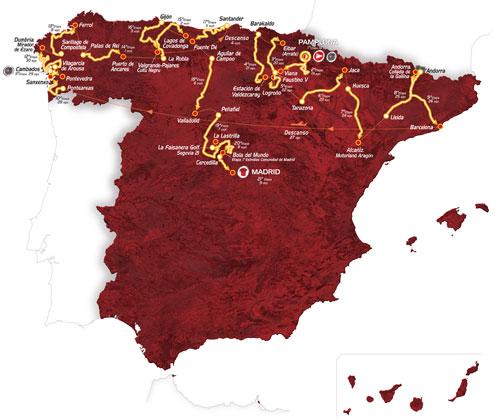 Vuelta 2012 route map
Vuelta 2012 route mapVuelta 2012 Preview: Our guide to the year's final Grand Tour
Tomorrow sees the start of the 67th edition of the Vuelta, and if the bookmakers are correct, the general classifciation will come down to a straight fight between Alberton Contador, back from his doping ban, and Chris Froome, runner-up last year and again in the Tour de France and leading Team Sky in a Grand Tour for the first time.
It's unlikely to be that much of a two-horse race, of course, with plenty of other GC hopefuls looking to end their 2012 season on a high, while others will be looking to hone their form ahead of next month's world championships in the Netherlands. There are plenty of tough mountain stages, but there are also oppotunities for the sprinters.
Unlike recent editions, this yea's race is played out entirely in the northern half of the Iberian peninsula - Madrid, on the final day, is the most southerly point this time round.
While that means that the riders won't be exposed to the searing heat that caused problems for so many in the early days of the last two editions, which began respectively in Seville and Benidorm, it does mean that the unpredictable weather further north could be a factor.
As usual we will be running the rule over the main contenders with Team Sky's Geraint Thomas who's been enjoying a post-Olympic break, and he'll also be giving a stage-by-stage commentary, so look out for that very soon.
Unlike the Tour de France, the Vuelta only makes two distinctions between road stages – plain, or mountain, with no medium mountains category. What’s more, ‘plain’ certainly doesn’t mean ‘flat,’ and it doesn’t guarantee a bunch finish – Stage 6, for example has a tough closing climb.
One note about the stage maps - the routes marked in red represent the course of the race itself. Those in green are the routes followed by the off-race vehicles such as team buses.
Stage 1
TTT
Saturday 18 August
Pamplona > Pamplona 16.5 km
As in Seville two years ago, the 2012 Vuelta starts with an evening team time trial and the location is no stranger to high-adrenaline spectacle, with the closing part of this stage following the same narrow, twisting roads in Pamplona made famous by the running of the bulls during the annual San Fermin festival.

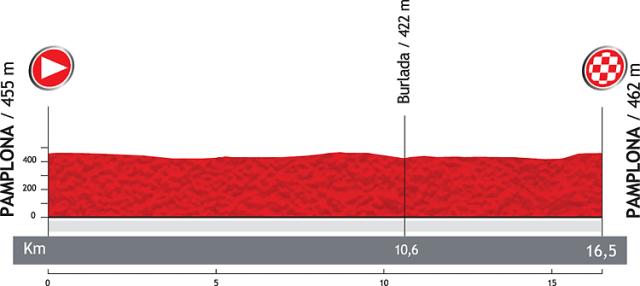
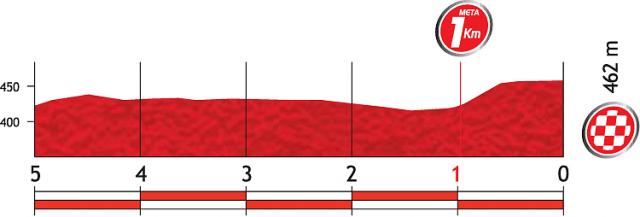
Stage 2
Plain
Sunday 19 August
Pamplona > Viana 181.4 km
In Spain, what pass for flat stages tend to be rolling ones, and today’s route includes a Category 3 climb that will give someone in the inevitable break a chance to get into the mountains jersey. There’s a drag up to the finish in the closing couple of kilometres, but it looks like a day for a bunch sprint.
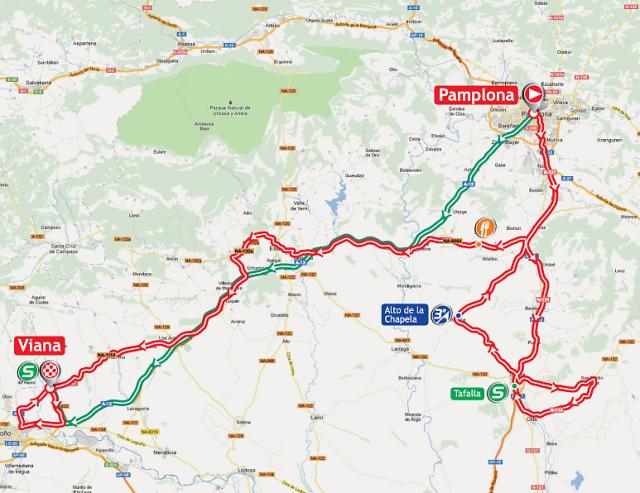

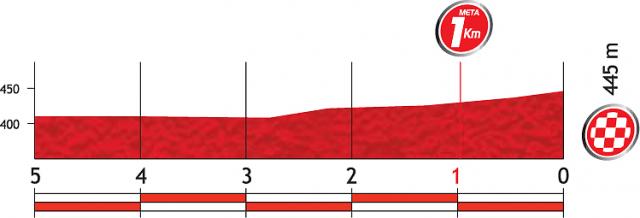
Stage 3
Mountain
Monday 20 August
Faustino V > Eibar (Arrate) 155.3 km
Following last year’s return to the Basque Country after nearly four decades, the race is back there again this year albeit for a brief visit, with a stage that finishes with a tough climb to Eibar-Arrate, often appearing in the Vuelta a Pais Vasco, an early opportunity for riders with an eye on the overall title to try and get some time on their rivals.
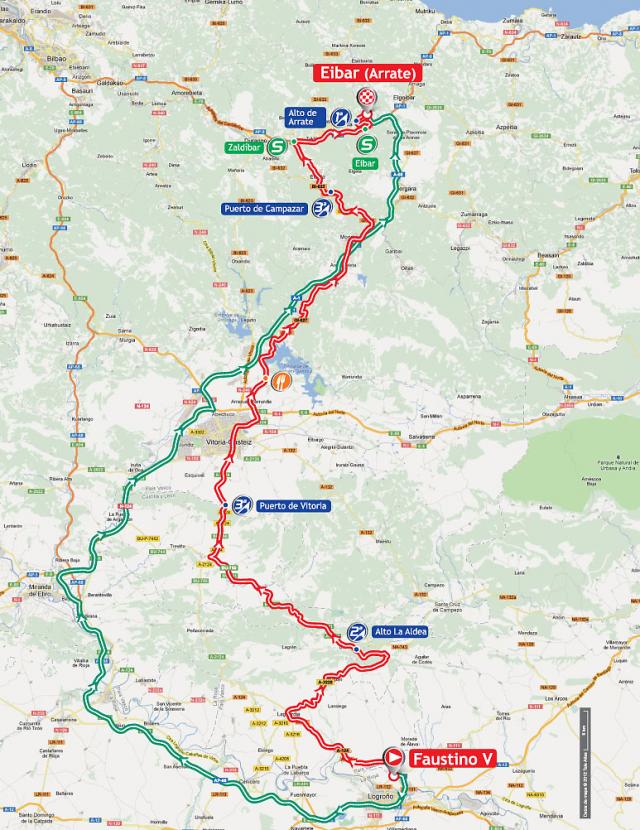


Stage 4
Mountain
Tuesday 21 August
Barakaldo > Estación de Valdezcaray 160.6 km
The early climb of the Orduña today is another regular feature of the Vuelta a Pais Vasco, and while the stage finish at the Valdezcaray ski station is the first summit arrival on this year’s race, the ascent certainly isn’t as tough as some of those that will be encountered later on – last time a Vuelta stage finished at the point where today’s stage does, Sean Kelly was the winner, so it’s not necessarily a day for the pure mountain goats.


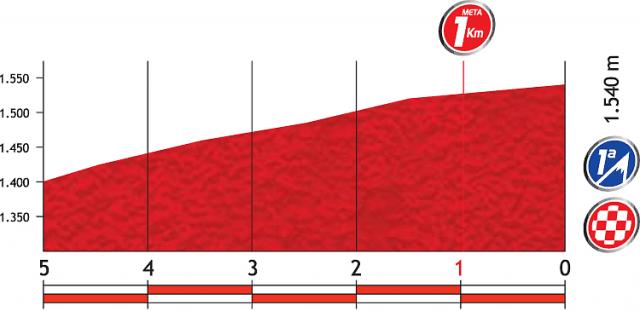
Stage 5
Plain
Wednesday 22 August
Logroño > Logroño 168.0 km
As usual on the Vuelta, sprint stages are relatively few and far between and are often sandwiched between two days in the mountains. The sprinters will know exactly what to expect as they head into the closing kilometres – today’s stage takes place on a loop of around 40 kilometres and they will already have crossed the finish line three times before the finale. Oscar Freire was the winner of the last Vuelta stage here, in 2007.
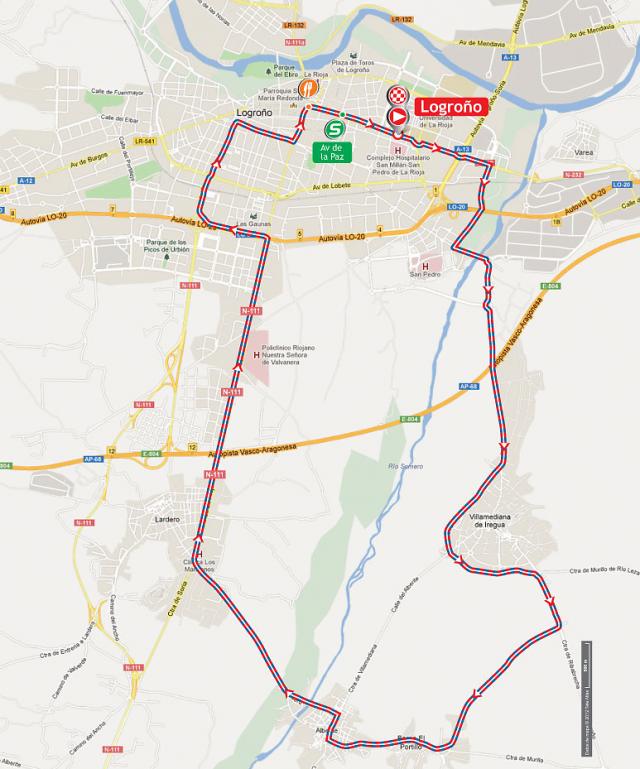
.
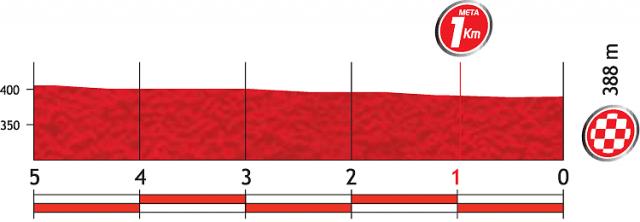
Stage 6
Plain
Thursday 23 August
Tarazona > Jaca 175.4 km
Another summit finish, and one that is preceded by the Category 3 ascent of the Puerto de Oreol, crested a little under 15 kilometres out. The finishing climb of the Alto Fuerte de Rapitan has been given a similar categorisation, but is likely to prove tougher, with ramps of up to 14 per cent in places and nearly 4 kilometres of climbing at an average gradient of 8 per cent.



Stage 7
Plain
Friday 24 August
Huesca > Alcañiz. Motorland Aragón 164.2 km
This stage, which finishes on the Motorland Aragon motor racing circuit, presents another opportunity for a bunch sprint, but if the wind is up, as it often is in this part of the country, it could be a nervous day in the saddle due to the prospect of the peloton splitting.



Stage 8
Mountain
Saturday 25 August
Lleida > Andorra. Collada de la Gallina 174.7 km
The race heads into Andorra today for another summit finish, this time on a climb never before used on the race, the Collada de la Gallina, preceded by what could for some be a fraught descent from the Category 2 Comella. Rather than being a steady drag, the final climb has some steep sections and is likely to invite attacks, and there could be a reshuffling of the top of the GC.
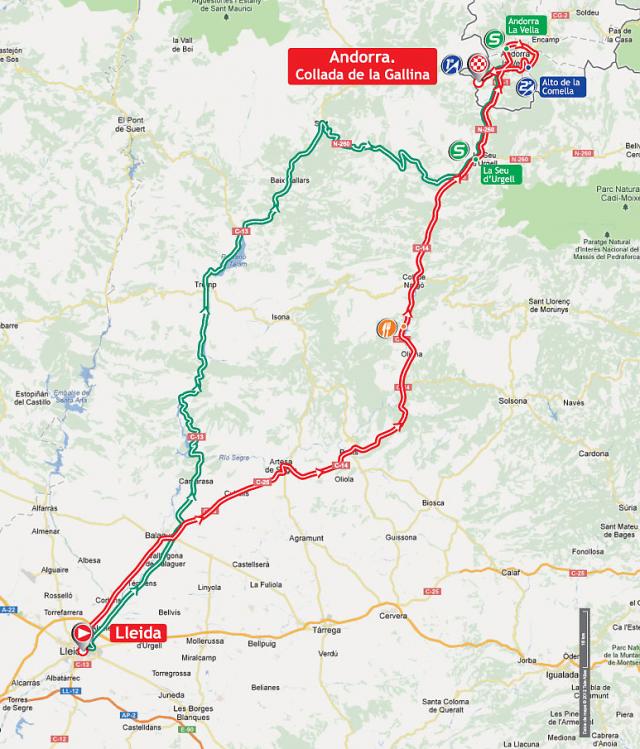

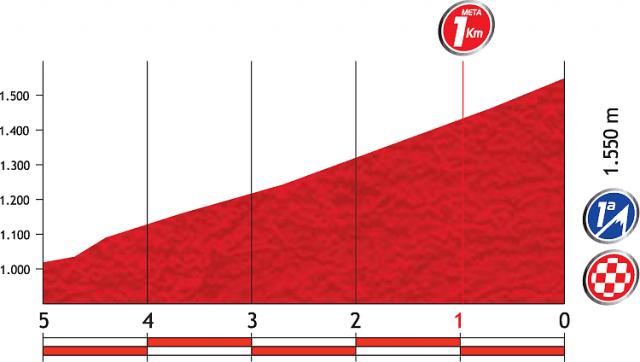
Stage 9
Plain
Sunday 26 August
Andorra > Barcelona 196.3 km
It’s been 13 years since a Vuelta stage finished in Barcelona, but more recently the Catalan capital staged a memorable Tour de France finish in 2009 when David Millar, who lives up the coast, tried desperately to stay away only to be caught on the slopes of Montjuic, with Thor Hushovd taking the win. The sprinters’ teams will want to ensure that any escapees are reeled in a lot earlier than that today.

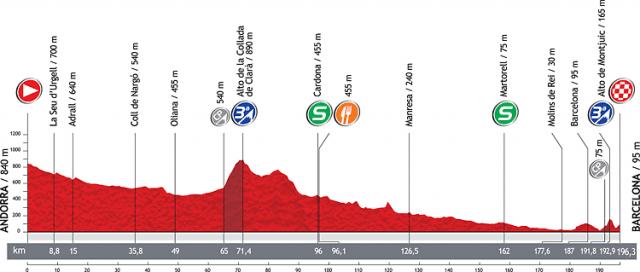
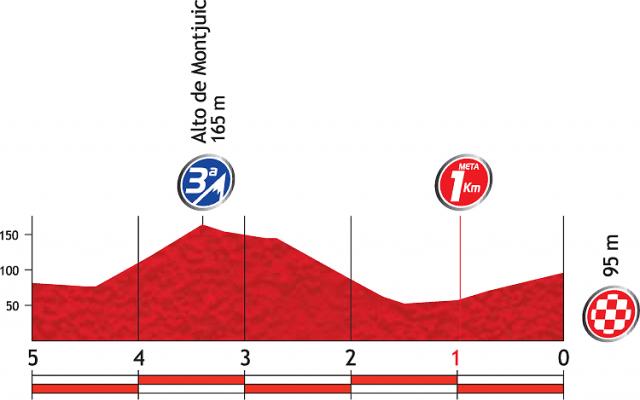
Rest Day
Monday 27 August
Stage 10
Plain
Tuesday 28 August
Ponteareas > Sanxenxo 190.0 km
Racing resumes after yesterday’s rest day – and a transfer from the Mediterranean coast to the Atlantic one – with what on paper looks like another day for the sprinters, but being on the Galician coast, there is always the possibility of the wind playing a role if it’s blowing.



Stage 11
ITT
Wednesday 29 August
Cambados > Pontevedra 39.4 km
Last year, Chris Froome used the time trial in Salamanca to take the race leader’s red jersey, ceding it to team mate Bradley Wiggins the following day in circumstances that still rankle some fans. Froome’s time trialling and climbing form means that on a course that includes a Category 3 ascent he has a chance to put some decent time into his rivals. An in-form Contador would also be likely to do well today.



Stage 12
Plain
Thursday 30 August
Vilagarcía de Arousa > Mirador de Ézaro 190.5 km
An innocuous looking stage until the final few kilometres, the final 1.8 kilometre climb has an average gradient of 13.5 per cent and with a similar feel to the stage he won last year at Valdepeñas de Jaen looks tailor made for Joaquin Rodriguez assuming the Katusha rider is able to repeat the form he showed in the Ardennes Classics and again in the Giro d’Italia, where he finished second to Ryder Hesjedal.


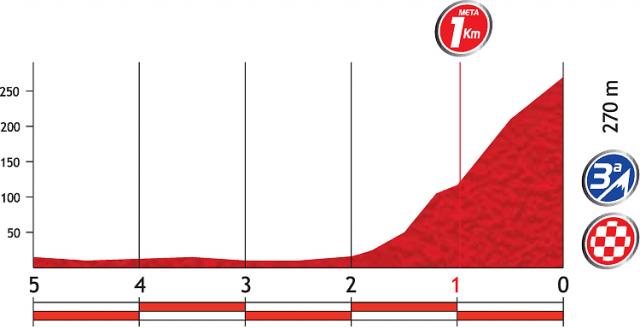
Stage 13
Plain
Friday 31 August
Santiago de Compostela > Ferrol 172.8 km
An intriguing day in prospect, since with four summit finishes following in rapid-fire succession, the GC contenders and riders who will support them in the mountains will be looking to take things relatively easy. That doesn’t mean it’s a nailed-on bunch sprint, however, since smaller teams, particularly ones that haven’t made an impact so far, will be aware that opportunities are limited from this point on.
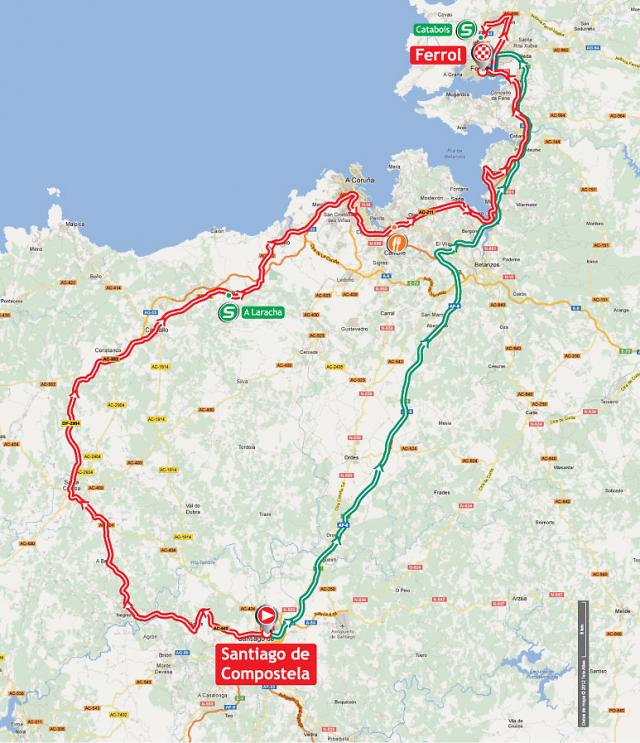
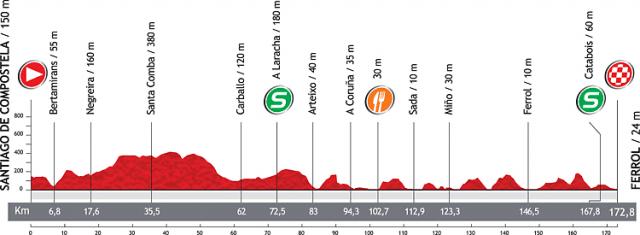

Stage 14
Mountain
Saturday 1 September
Palas de Rei > Puerto de Ancares 149.2 km
The Puerto de Ancares made its Vuelta debut last year, featuring on the route of a stage won by HTC Highroad’s Michael Albasini, now with Orica-GreenEdge. It returns as the first of a quartet of consecutive summit finishes that will help shape the GC, though not necessarily decide the eventual winner and the climb, which has an average gradient of 8 per cent, should see some of the overall favourites try and make a move.
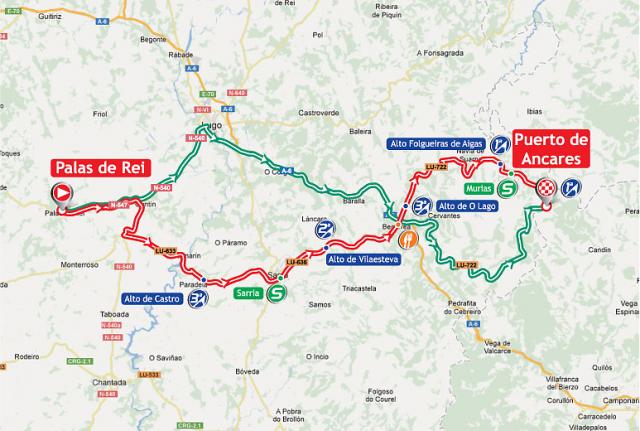

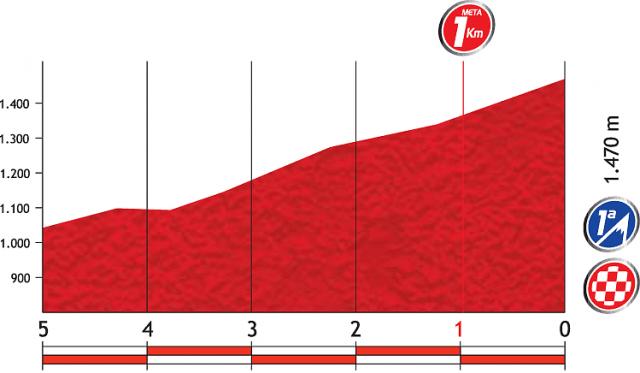
Stage 15
Mountain
Sunday 2 September
La Robla > Lagos de Covadonga 186.5 km
The climb which closes today’s stage has become one of the Vuelta’s signature ascents and makes its 18th appearance on the race. Often influential in terms of the GC, there are some very tough sections and anyone with pretensions to the overall win who is struggling after yesterday’s stage could lose a lot of time.
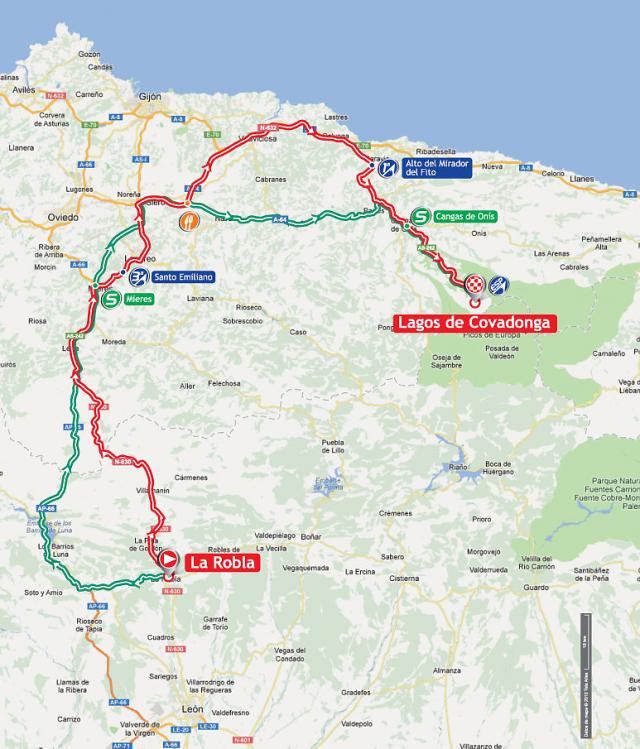


Stage 16
Mountain
Monday 3 September
Gijón > Valgrande-Pajares. Cuitu Negru 183.5 km
The Vuelta’s organsisers have got into the habit of throwing new climbs into the race that quickly establish themselves as classics, and this could well turn out to be one of them, with an average gradient of 13.5 per cent inside the final 3 kilometres that in places has ramps of up to 25 per cent. While the past two days have both featured climbs ahead of the final ascent, the two that precede today’s summit finish are both Category 1. A big day, and another important one for the GC ahead of tomorrow’s rest day.



Rest Day
Tuesday 4 September
Stage 17
Plain
Wednesday 5 September
Santander > Fuente Dé 187.3 km
The fourth of the successive mountain-top finishes, but this one at least comes after what will have been a welcome rest day and the final climb also has a less taxing profile than the ones encountered on the preceding stages. It’s a steady climb with a fairly shallow gradient and this could be a day when the GC men let a break go.



Stage 18
Plain
Thursday 6 September
Aguilar de Campoo > Valladolid 204.5 km
Any sprinters left in the race will welcome today’s stage, but on the plain, it isn’t the rain in Spain that’s likely to cause problems but the wind if its gusting. And if that does happen, the GC contenders are likely to be fighting for position to ensure that if the race does split, they are on the right side of it. It could be a nervous day. The last sprint finish in Valladolid, by the way, was in 2008 and it was won by the late Wouter Weylandt.
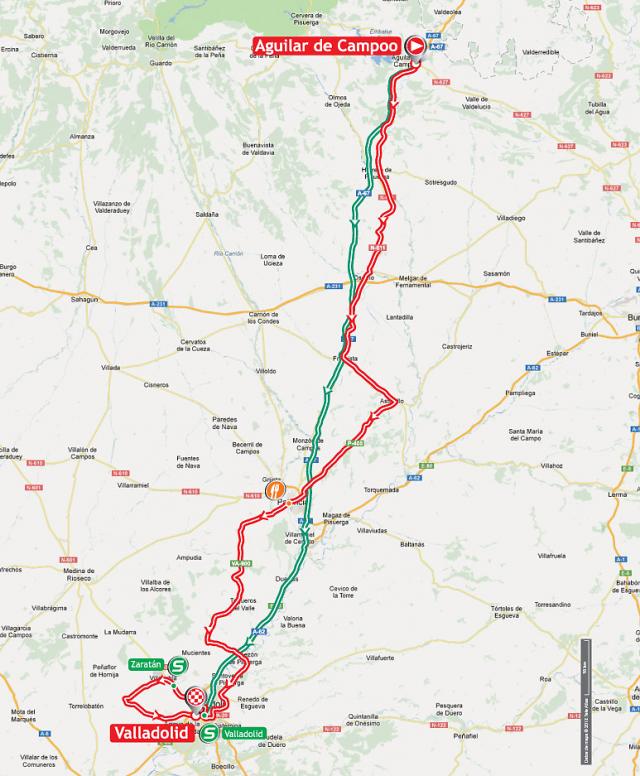
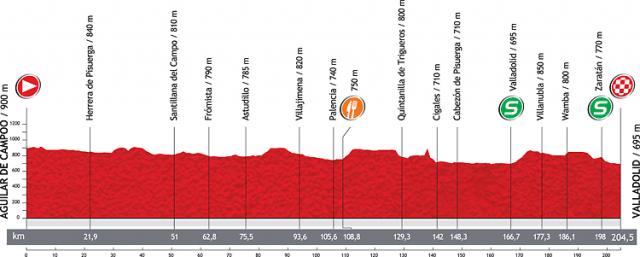

Stage 19
Plain
Friday 7 September
Peñafiel > La Lastrilla 178.4 km
The sprinters have one more chance in Madrid on Sunday, but with a tricky finish in prospect, it’s also the kind of day where teams that haven’t got anything from the race might try and rescue something. There are no categorised climbs but with the road heading uphill in the first two kilometres, early attacks are guaranteed, and an average gradient of 4 per cent for the final 2 kilometres means it’s one for a strong finisher rather than perhaps a pure sprinter.
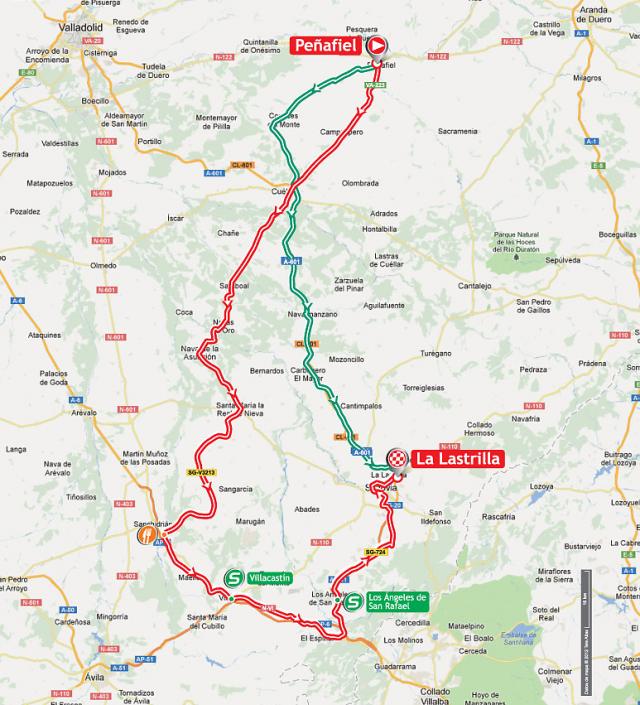

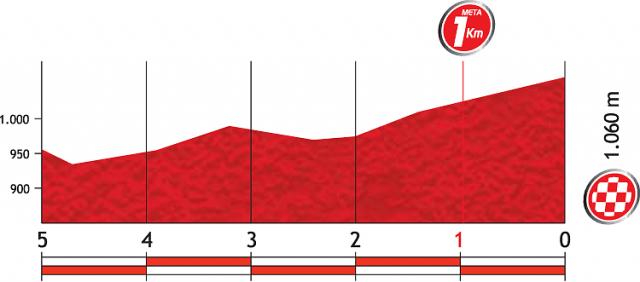
Stage 20
Mountain
Saturday 8 September
La Faisanera Golf. > Bola del Mundo 170.7 km
Any issues unresolved in the GC will be settled today on the mountain outside Madrid that made its Vuelta debut in 2010 for a thrilling stage that saw eventual winner Vincenzo Nibali see of the challenge from second-placed Ezequiel Mosquera, who would later turn out to have failed a doping control during the race. Ahead of the Bola del Mundo, the four other categorised climbs will have shed out all but the strongest. Local hero Alberto Contador will know this climb better than anyone, but will that knowledge prove decisive?
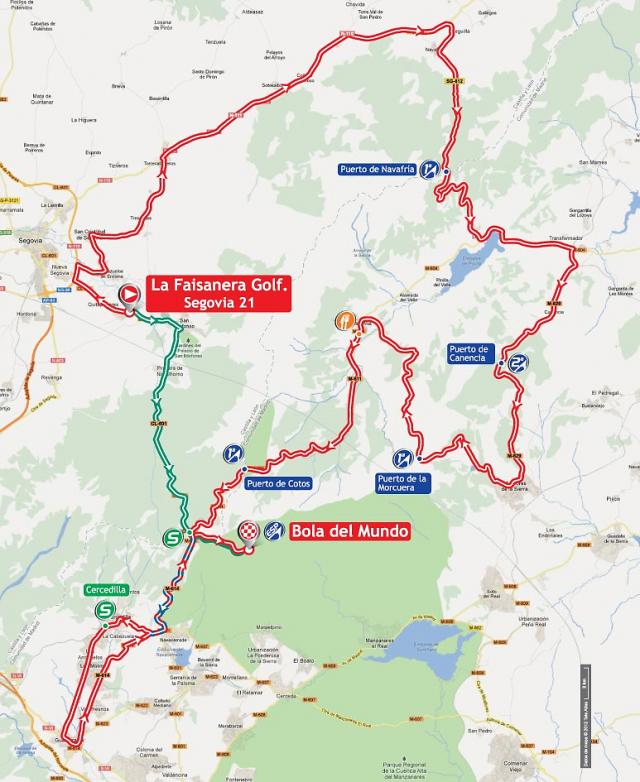
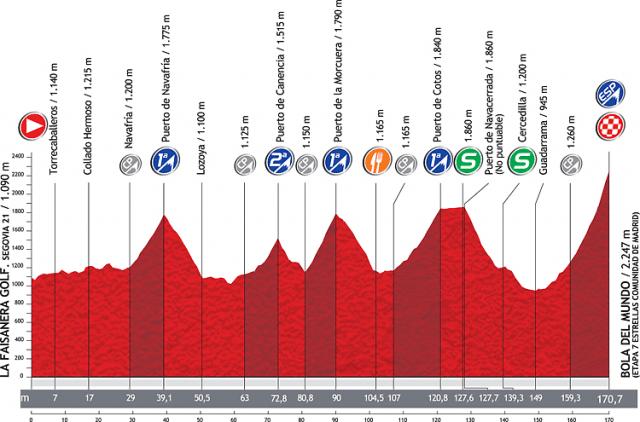

Stage 21
Plain
Sunday 9 September
Cercedilla > Madrid 115.0 km
As ever, the race ends with the traditional procession into Madrid, heading down from the mountains before ten laps of the 5.7 kilometre circuit where Peter Sagan took his third Vuelta stage of last year’s edition. The usual bunch finish will be followed by the coronation of the 2012 Vuelta champion on the Plaza de Cibeles.



One thing that bothers me is the use of antidepressant med and driving, it never gets picked up by police. Most of these types of medicines state...
Such as, for example, saying: "It’s made from two types of fabric: super-loud yellow (orange is also available as a colour option, as is pink in...
Possibly, but I think there will still be a time delay between receiving a warning and looking and the brain processing the image.I guess cycling...
Gutted
Indeed - but again these are perhaps questions we should keep asking. Even if the immediate answer is "well we are where we are" or "how on earth...
Specialized aren't that American. Merida owns something like 49%.
Then smash bad driving behaviour very hard...
Calls for Oxfordshire transport chief to resign blocked...